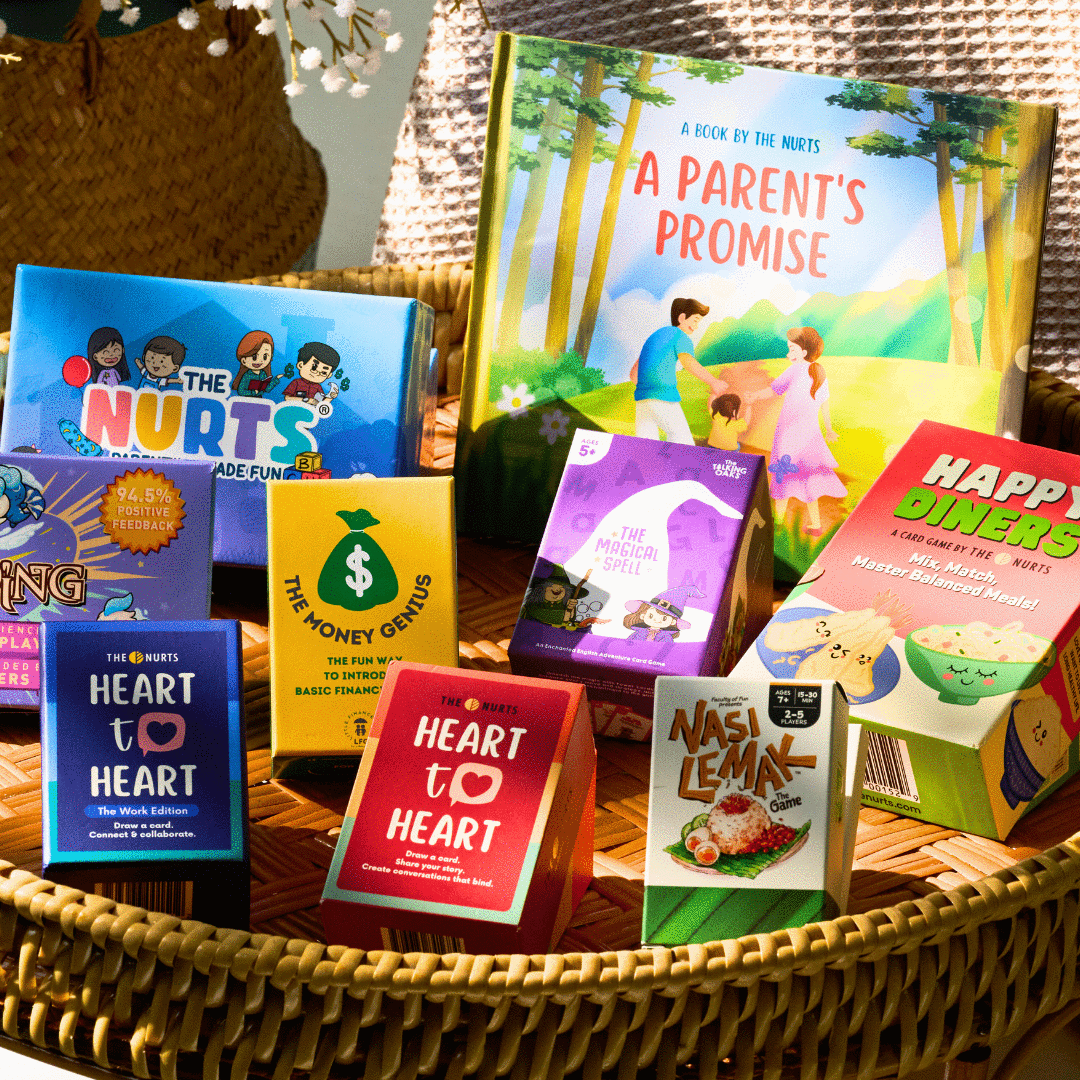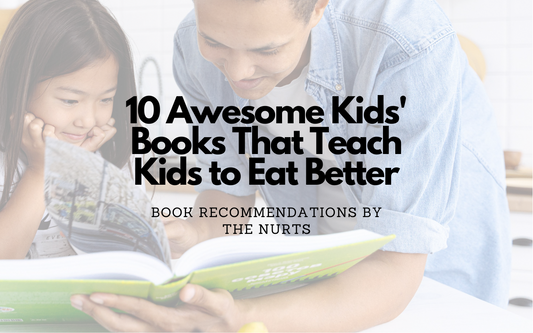Introducing kids to healthy eating through books can be an exciting adventure! The right books can make learning about food fun and help kids develop a positive attitude toward nutritious choices. With colourful stories and playful characters, kids can explore the importance of a balanced diet in a way that’s both entertaining and educational.
One of our personal favourites is "Green Eggs and Ham" by Dr. Seuss. Its uniqueness and the rhythmic flow, which Dr. Seuss is so well-known for, made a lasting impression. The playful repetition, whimsical language, and the clever way it encourages trying new things are just a few reasons it remains such a cherished book in our memories.
Here are 10 fantastic books to help spark your child's curiosity about healthy eating:

This is a beloved children's classic that follows the journey of a caterpillar as it eats through various foods before transforming into a butterfly. While not solely focused on nutrition, the book introduces children to a variety of foods and can spark discussions about healthy eating habits.
The story provides an opportunity to talk with children about different types of food, their importance, and the concept of moderation. Parents and educators can guide children in distinguishing between nutritious foods and indulgent ones, teaching the value of balance in their diet.
An engaging activity could involve creating a food chart based on the foods in the book, where children can identify which ones are healthy choices. They can then draw or list their favourite healthy foods and talk about how these can be part of their daily meals.

In this book, Bloch creatively tackles common food-related idioms through the adventures of a picky eater and his dog, Roger.
With whimsical illustrations combining line drawings and photographs, the book offers a humorous exploration of mealtime struggles, encouraging kids to try new foods and enjoy variety in their diet.
Perfect for introducing children to the fun of language while subtly promoting healthy eating habits, the book is an imaginative way to show that variety is truly the spice of life!

3. “I Will Never Not Ever Eat a Tomato” by Lauren Child
Here we meet Lola, a picky eater who refuses to eat certain foods, including tomatoes. Her brother, Charlie, uses his creativity to disguise the foods, making them appear more appealing and helping Lola try new things.
This entertaining story can help children realise that trying unfamiliar foods can be fun and rewarding. By addressing picky eating in a humorous and light-hearted way, the book encourages children to step outside their comfort zones and be open to new food experiences.
A related activity might involve creating a “Try It” chart where kids can list new foods they are willing to try, then record their reactions. This can help start conversations about overcoming food aversions and the benefits of trying new things.

This story is about Nicky, who stubbornly refuses to eat her vegetables, insisting she would prefer to eat bees and parrots over peas and carrots. Her whimsical declarations frustrate her family, who are determined to help her overcome her finicky habits.
To encourage Nicky to try new foods, her inventive family devises clever strategies that turn ordinary meals into fun culinary adventures.
Through humour and creativity, the story highlights the importance of healthy eating and being open to trying different foods, making it an engaging read for both children and their parents.

5. "Green Eggs and Ham" by Dr. Seuss
Dr Seuss needs no introduction - this is yet another quirky, rhythmic story from the beloved author that follows the character Sam-I-Am as he tries to convince another character to try green eggs and ham. Despite initial reluctance, the story humorously shows how persistence and a little creativity can make trying new foods more appealing.
This timeless tale resonates with children who may be hesitant to eat unfamiliar foods, reminding them that trying new things can lead to surprising discoveries.
A great activity to pair with this book is a “Veggie Challenge,” where children can track how many new vegetables they try each week. It’s a fun way to motivate them to expand their palate and reward their efforts in a non-food-related way.

6. "Eat Your Peas" by Kes Gray
This tells the story of Daisy, a little girl who refuses to eat her peas, much to her mother’s frustration. Her mom offers increasingly absurd rewards to convince Daisy to eat them, but in the end, Daisy outsmarts her mom.
This humorous book is a great way to address the common issue of picky eating in a fun and relatable manner, encouraging children to be more open to trying new foods without pressure.

7. "The Berenstain Bears and Too Much Junk Food" by Stan and Jan Berenstain
The Bear family loves their junk food, but they soon learn from Dr. Grizzly about how too much junk food can harm their health. Together, they make a shift to healthier eating habits.
This book provides an excellent opportunity to discuss the impact of eating too much junk food and the importance of a balanced diet and regular exercise.
After reading, parents or educators can encourage children to pick their favourite snack and find a healthier alternative, such as swapping chips for air-popped popcorn. This hands-on activity helps children see how small changes can lead to healthier habits.

8. "Eating the Alphabet" by Lois Ehlert
A beautifully-illustrated alphabet book that introduces children to a wide range of fruits and vegetables from A to Z! This book not only teaches children the alphabet but also expands their knowledge of healthy foods they might not encounter regularly.
To make learning even more engaging, a food scavenger hunt could be organised where kids find a fruit or vegetable for each letter of the alphabet.
This could involve drawing, tasting, or even visiting a market, making the learning experience interactive and memorable.

9. "Gregory, the Terrible Eater" by Mitchell Sharmat
We follow along the food adventures of Gregory the Goat, who prefers eating junk food like tires and bottles. His parents help him understand that while those might be fun, they’re not nutritious. They guide him towards healthier eating habits.
This story offers a light-hearted approach to teaching moderation and balance in food choices, helping children recognise the importance of eating healthy foods regularly.
An activity to complement this lesson could involve creating a meal plan where children distinguish between “healthy” choices and “sometimes” foods, helping them grasp the idea of balance in their diet.

10. "How Did That Get in My Lunchbox? The Story of Food" by Chris Butterworth
A charming story that takes children on a journey from the farm to their lunchbox, explaining where their food comes from.
This book is a wonderful tool for fostering an appreciation for fresh, healthy foods, while also making children more mindful of what they eat.
A great way to extend this lesson is to take children to a farmer’s market or a garden, allowing them to see firsthand where food grows. They can then use ingredients they’ve seen to make a simple dish, deepening their understanding of the farm-to-table process.
Enjoy reading to and nurturing healthy little eaters!
----
Disclaimer:
*All rights to the images used in this article belong to the respective authors and publishers.







